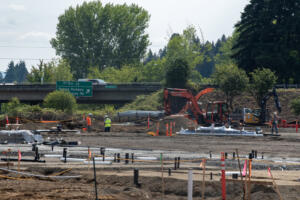The legislative town hall with Republican lawmakers from the state’s 18th District held Saturday morning inside the Port of Camas-Washougal’s picturesque headquarters had a few moments of drama over vaccines and taxes but was mostly a well-oiled affair covering an impressively diverse range of topics.
Two of the topics constituents asked the lawmakers to address — fighting climate change on a state level by supporting low- and no-emissions vehicles while implementing tighter low-carbon fuel standards and addressing the state’s growth management constraints on local cities’ ability to halt growth at the local level — seemingly had little in common.
Look closer, however, and it’s easy to see how smart growth management and the race to stifle climate change are inextricably linked.
According to the Environmental Protection Agency, “the way we develop our communities has significant impacts on greenhouse gas emissions.” Building more urbanized areas that reuse existing infrastructure; putting homes, jobs, stores, parks and schools closer together to reduce vehicle trips; preserving green spaces to help capture carbon dioxide; and using energy efficient building techniques on new homes, schools and businesses all help reduce climate change.
Stemming climate change either means giving up our thirst for commuting from rural areas to work in urban areas and for traveling long distances since cars, trucks and planes that rely on fossil fuels to run make up the largest source of carbon emissions in the United States, or it means finding a more sustainable way of traveling and commuting — including using low-carbon fuels and purchasing no-emissions vehicles.




